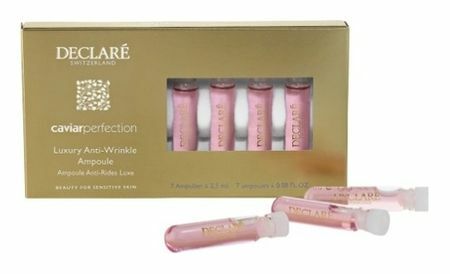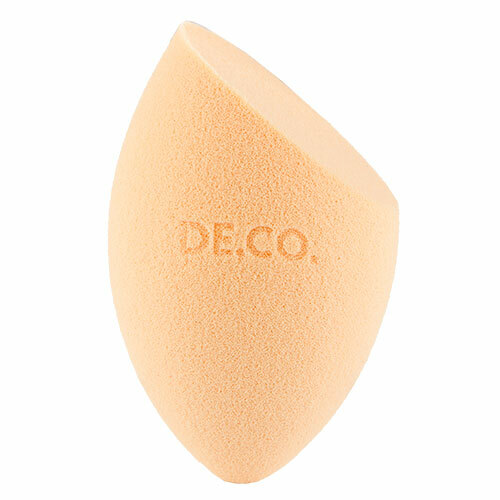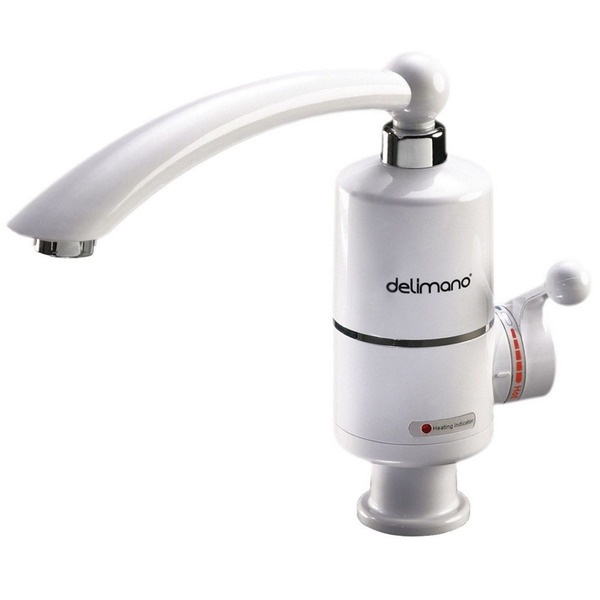In a modern building, along with the latest generation of heaters - Mineral wool, foam and Styrofoam does not give up its position and expanded clay, the most famous and popular of the natural discharge heaters. It as the insulation material widely used in the last century. But until today it has not lost its relevance, given its good performance and a relatively low price.

What is the concrete block
This material is presented in the form of granules of a small size, produced in the factory, as a result of the firing of clay in special furnaces of the drum type. Different technology of preparation of the feedstock, which serve as clay or shale, as well as trommel, expanded clay allows to obtain different densities and shapes in accordance with the GOST 9759-76. It keramzit applicable not only to a floor screed, but also in the production of lightweight concrete, which filler is easy for the device drain fields, and it is used as insulation floors, heating, exterior water supply systems, landscaping for insulation lawns.

A small proportion of the beads are due to swelling of the feedstock that is achieved by exposure to high temperatures the clay.
Briefly about production technology of expanded clay
Depending on the state and type of raw material used is one of several techniques, which are made keramzit:
- wet process;
- dry;
- of the powder mass;
- of hydrated clay.
In the wet method, raw materials having a high moisture content, is adjusted to almost liquid consistence, and is called slip. In this state, semi-fluid mass flows into the drum-type furnace, where under influence of high temperature and gases takes the form of separate granules or beads. Method expensive, given the large consumption of heat source to remove excess moisture from the feedstock. However, with this method it is possible to introduce into the expanded clay certain additives which increase its specifications and purify weight of different inclusions in the form of stones or other unwanted components.

The dry method involves crushing dry raw materials, if the clay is extracted in the form of stones. After that, the scattered masses enters the furnace drum and then all of a single technology. A similar method is the most simple and economical.
Production of expanded clay of the powdery raw material consists in primary crushing clay to substantially dust condition, after which it was diluted with water. The result is a mass resembling clay, from which and make round or cubic pellets.
The latter method is the production of expanded clay resembles a production of red brick, as feedstock and moisturize sent to special mixer, where it takes the form of a steep clay dough which is passed through the press rollers or with holes. At the output obtained granules of cylindrical shape, which enter the kiln where dried and sintered.
After passing through the cooling stage, which occurs with the gradual temperature decrease to give haydite necessary strength, granules fed into fractionation chamber, where they are given a certain the form.
The properties of expanded clay
Not smooth popularity insulation produced from clay, due to its characteristics:
- Environmentally friendly, as product is made from natural raw materials.
- High mechanical strength obtained due to sintering of the clay granules stone state.
- Good thermal insulation due to the presence in the material of tiny air chambers that are formed in step swelling clay. Ten-layer of expanded clay in its ability to store heat replaces half a meter tridtsatisantimetrovuyu brick wall and wooden structure.
- Resistance to sudden changes in temperature.
- Fire resistance.
- The duration of operation.
- Tolerability contact with acids, bases and other chemically aggressive substances.
- Low specific weight not exceeding 600 kg / m3, whereby the insulation, even rolled in large layer does not exert strong pressure on the support base.
- Low cost with good technical data.
- The ability to stack on any base expanded clay up to earth.
If there are a plurality of positive material properties differ only drawback - the ability to absorb moisture in large amounts. But this lack of a conditional, and refers to a heater from expanded clay, which is filled without a protective surface layer. For example, for the regulation of water balance in the soil is specially added to concrete block, where he saturate with moisture and releases it when the ground is dry.
Use of expanded clay in construction
Most often, material that is available in three versions - expanded clay gravel, crushed stone and sand used in such papers as the screed floor with expanded clay.

Expanded clay gravel, grain diameter which varies in the range of 5-40 mm, apparatus used for the insulation layer on floors, ceilings, heating.
Crushed obtained sintered clay, gravel is different from its shape and dimensions of the granules are in a diameter range from 10 to 14 mm. Gravel of expanded clay is most often used in the manufacture of lightweight concrete.
Expanded clay sand as the name implies, is made with a grain size of not more than 5 mm in diameter. Tightening device used when a small thickness.
Types of expanded ties
Depending on the functionality of the room and the type of structure to insulate the floor to do floor screed with expanded clay can be using one of several technologies:
- semi-dry screed;
- wet;
- dry.
But with all the technology it is recommended to use concrete block with different grain sizes, to increase the density of the bulk insulation.
Semi-dry screed

floor screed with expanded clay moist type is done much easier than all other options. If laying expanded clay is assumed to overlap the first floor or on the ground in a private home, the first turn before making screed need to create a barrier to access to ground moisture insulation. As a coupler suitable waterproofing membrane of any material, roofing material, glassine paper, and even an inexpensive plastic film.
Most importantly, the joints of waterproofing materials, which are placed with overlap of 10-15 cm, should be sealingly glued or conventional masking tape, and in the case of film foil eponymous tape.
The base must be cleaned of debris, if the ground - then leveled and compacted. You can then spread waterproofing. If the underground space are electrical cables or wiring, which in future will be in the screed, they need to put in special boxes or corrugated pipe. After this it is necessary to determine the level of the top of the expanded clay screed. For this purpose, water or laser level. Mark horizontally brought to the wall with an ordinary pen or pencil.
By perimeter of the room must be left 8-10 cm wide gap for subsequent installation of insulation layer which simultaneously and will serve as a sound insulator, because through the joints of slabs good noise spreads to neighboring premises.
On a note: Plates of overlap quite profitable to book online representation of concrete plants. At prices more profitable exits.

On the prepared surface is poured concrete block and leveled wooden rule that looks like a rake, but without teeth. Next, in concrete block reinforcing mesh is placed (if required), and poured cement slurry to gravel, expanded clay absorbed the required amount of moisture. Otherwise moisture from the solution takes the heater to which the main screed is carried out, whereby its durability is insufficient, and uneven floor surface.
In another embodiment of the floor with insulation expanded clay over stretches dry insulation film, which will not allow moisture to infiltrate into pellets.
Apparatus wet screed
Screed with expanded clay produced by the wet method can rightfully be called lightweight aggregate, given the composition of the mixture and production technology.

The first step is to calculate how much need of expanded clay, sand and cement, depending on the functionality of the room, the anticipated loads on the floor. In a domestic environment, it is generally used a mixture prepared in the proportions 1: 1: 3: 2, wherein:
- cement and water is used on one portion;
- haydite -2 parts;
- sand -3 portion.
The required volume of the mixture is calculated by simply multiplying the area by the screed floor thickness, taking into account the irregularities of the base foundation. The horizontal level of the finished base is determined exactly as in the previous embodiment. Similarly laid waterproofing and insulation around the perimeter of a damper tape.
To prepare the mixtures require large capacity, which is filled with expanded clay and initially filled with water at 10-15 cm above its level. Such a procedure is needed for the porous structure of the expanded clay has absorbed as much water as you need. The degree of absorption is determined by the color changing granules. They should darken. After that, the tank is filled with cement, sand, water is added, and all components are thoroughly mixed as needed.
Before the mixture is put on the base of expanded clay majachnye need to install rails on the level by which the work will be performed more efficiently and faster. Beacons may be of wood or metal profiles. They should be firmly fixed on the basis of the base, so that they in the process of pouring claydite-concrete layer did not move from his seat. The mixture is poured between the rails and leveled majachnye rule that you want to do such a size that its edges lie on the lighthouses. Then it will move it on rails, and screed get even.
Recommended rolled mixture was flooded with spiked roller to come out all the air bubbles from the mixture, and the pellets took compact position.
After a couple of days for the screed can walk or do a secondary evening-so as a perfect flatness for finishing with the lightweight aggregate will not turn out to achieve, given the size of pellets.
Check that the base is dry or not, it can be popular method. Tie bet pot or cup, up Donets. After a while, if not more moisture evaporated from the lightweight aggregate mixture on the walls of the vessel will be condensation droplets. So walk on this floor is still impossible.
How to dry screed

The essence of this method consists in the use of expanded clay and water-resistant drywall sheets, molded plywood or chipboard. Advantages of this method are as follows:
- in the absence of mud;
- relatively easy to work in the physical plane;
- simple installation of communication networks, extending in an underground space;
- minimum roof load, which is especially important when such work is carried out in an old building stock;
- the maximum degree of insulation;
- ability to operate immediately after use.
Performing dry screed begins with the preparation of the base foundation. It is necessary to remove the old flooring, garbage, seal the large cracks and crevices. Thereafter, a concrete block on a leveled base layer gidroizoyatsii stretches. The strips of material are placed with overlap, the value of which is typically 10-15 cm and the joints formed are glued tape. In this case, the waterproofing material should wind up on the walls, a little above the level of the floor of the future. In the future, the visible remains of a waterproofing can easily be cut and close a plinth. As the perimeter is glued tape damper, which is designed to muffle the noise from the upper layer sheet moving dry screed.

Now you need to set the lighthouse rail on the horizontal level. To do this, stock up on such devices and tools such as:
- laser or water level;
- screwdriver;
- screwdriver;
- screws desired length.
Mark the horizon brought to the wall. Majachnye slats or metal profiles are set into piles gypsum slurry in accordance with the intended horizontal marks. Why plaster solution? The answer is simple, in contrast to the plaster cement-sand, grasped almost immediately, the obvious time saving.
Between beacons should be observed width equal to or slightly less than the length of the rules. Expanded clay gravel is poured on the entire area of the room, or section by section between majachnye rails and leveled again rule. Expanded clay must be lightly compacted, which uses a plastic float.

Under screed sometimes stacked substrate in the form of foamed polyethylene foam, which give the upper layer sheet of plasterboard or other material and create a more stable extra soundproofing.
The final stage will stacking sheet material into two layers. When the sheet layout to be observed ligation sutures to joints of the lower layer sheet arranged on the middle row. Between a material sealed with a special glue or screws. The seams are glued and sealed with tape serpyanku putty.
The main essence of the article
Screed with expanded clay will help to make the base of warm, create the required slope, the load on the supporting structure will be minimal. Choosing screed technology and the type of expanded clay depends on the functionality of the premises and the anticipated loads.



